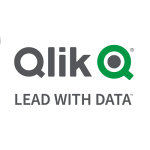What is our primary use case?
We are an analytics company, and we consult for different companies. Currently, we were doing automation of financial reporting, income statements, balance sheets, cash flow, and different kinds of analysis on revenue and products. We extract data from ERP solutions, accounting data, and then we transform that into financial reports.
What is most valuable?
The data modelling and the use of decks are key features. It is difficult to create financial statements using most BI solutions, with decks it is a bit easier to summarize data and to have cascading totals that you would find in an income statement or balance sheet. Most other solutions, you can not have a moving total but with this solution, we found it very easy to implement.
I also find connecting to different data sources is quite simple. Other solutions we were using before were complicated.
What needs improvement?
I think that there should be visuals for financial reporting videos. It should just be a plug and play because there is a lot of coding that goes into it with different clients. We should have a visual for income statements and other elements, this should be made easier. For example, suppose you are looking at an inventory report, it is all plug and play because you can just use a matrix or a table to summarize the information and the visuals. The systems are more adapted to that kind of area than for financial purposes.
For the next release, I think they need to improve on getting more visuals that are related to the finance side of things. Like I mentioned before, the matrix now is more of an OLAP cube, we are looking into something more adapted to the finance field, such as a drag and drop where you can build an income statement very quickly without too much code. This would be a nice addition.
As far as I understand Microsoft has two solutions that are similar, Power BI Report Builder and Power BI Desktop. The features that you get in Power BI Desktop are more advanced than the features that you get in Power BI Report Builder. They should just merge the two and move forward this way. There is no reason to have two different applications serving the same purpose.
For how long have I used the solution?
I have been using the solution for 18 months.
What do I think about the stability of the solution?
The biggest problem we have had is refreshing with MySQL, we are using a MySQL backend. It has to refresh all the data at once and store it in a cache, is my understanding. I am not sure where Power BI stores the data that it gets from the warehouse, this takes some time. If there are interruptions in the network, then the figures become messed up at some point. It should either commit all the data or it should not commit anything at all if there are errors. I think that is the biggest issue we have had so far.
What do I think about the scalability of the solution?
We are rolling out the solution to various clients and one of them is a large client in the manufacturing industry. The solution scalability is very good, we can do a lot with it.
We have about 40 users at the moment. As we continue to expand, we are looking at approximately 20 companies with about five users at a time. Currently, we have done five companies, but I think by the end of this quarter, we should have about 100 users in total. At the end of the year, we hope to have at least 200 users from different financial departments in different companies. It is my team that does the financial reporting, we also have other companies that have the operations and logistics. We are looking to probably double that figure because eventually, we should be moving to the enterprise license. We had seen that the enterprise license will be beneficial to us. If everything goes as planned, we are looking at about 500 users at some point.
How are customer service and technical support?
At the moment we have not needed much technical support from Microsoft. Most of the problems we have faced have either been resolved by someone else on the forums available. We also have an expert consultant in the UK who helps us. The areas that have needed assistance has been very minimal.
Which solution did I use previously and why did I switch?
We have used Eclipse BIRT and Knowage in the past but were not as good and more complicated. We find Power BI is more direct, it is much easier to connect to other data sources and so forth.
How was the initial setup?
The setup was very straightforward. You just download through the Windows Store or through the website, then you just start to connect your databases.
What about the implementation team?
The first deployment took approximately four months. The data preparation took most of the time, once we got into Power BI we had most of our financial reports in a month.
Part of our implementation strategy was to get the requirements from the customer, documents, information on what they were using before, key performance indicators and other information. Afterwards, we started to build the data warehouse with the requirements in mind. We tried to mimic the reports that they were using before when we were building the Power BI reports. We tried as much as possible to have reports that look similar to the reports to meet our customer's needs.
There is a similarity between Microsoft Excel and Power BI. If you understand one it make the other easier to understand. If you grasp Excel, it is easy to grasp Power BI as a user. We wanted to make it as similar as possible to the Microsoft Excel experience, with the drill-downs and the pivot tables and so forth. I think with the matrix in Power BI, it is more or less similar, it is the same experience. To summarize our implementation strategy, it was to try to mimic the reports as much as possible and then add more features that are available in Power BI.
What's my experience with pricing, setup cost, and licensing?
We pay on a monthly basis which is approximately $10 per user on the Microsoft Power BI Pro license. At the moment we are still down at 400 users, but once we reach 500 users, we will move to the premium edition. The premium is $5,000 for unlimited users. Currently, with the 40 users, the cost is roughly $500.
There can be some additional cost, for instance, it was an internal decision to have an on-premises gateway set up with the standard Windows Server installed on it. We had to set up this server on our side, which costs us no more than $400. This was important because we needed something to allow our reports to refresh on a regular interval without people using the personal gateways.
What other advice do I have?
I would advise those thinking about implementing the solution to compare different products to see what is on the market. They have to look at the pricing which is what we looked at initially, I think it quite affordable. Additionally, research the infrastructure that is required and the cost per user for the different BI solutions. Some of the solutions are cheap, such as Eclipse BIRT and Knowage, but it takes a lot of efforts to get your reports out with them.
With this solution, it is more of a drag and drop scenario. You have a quicker delivery time as compared to the traditional or the older BI solutions.
The biggest lesson I have learned with working with this solution has been in the area of data warehousing, you should develop something that is more like a star schema when building a BI solution, especially with this solution. It makes things much easier. We did not favour the star schema, we preferred the snowflake approach. However, data modelling is easier when you use the star schema.
I rate Microsoft BI a seven out of ten.
Which deployment model are you using for this solution?
Public Cloud
Disclosure: I am a real user, and this review is based on my own experience and opinions.

















